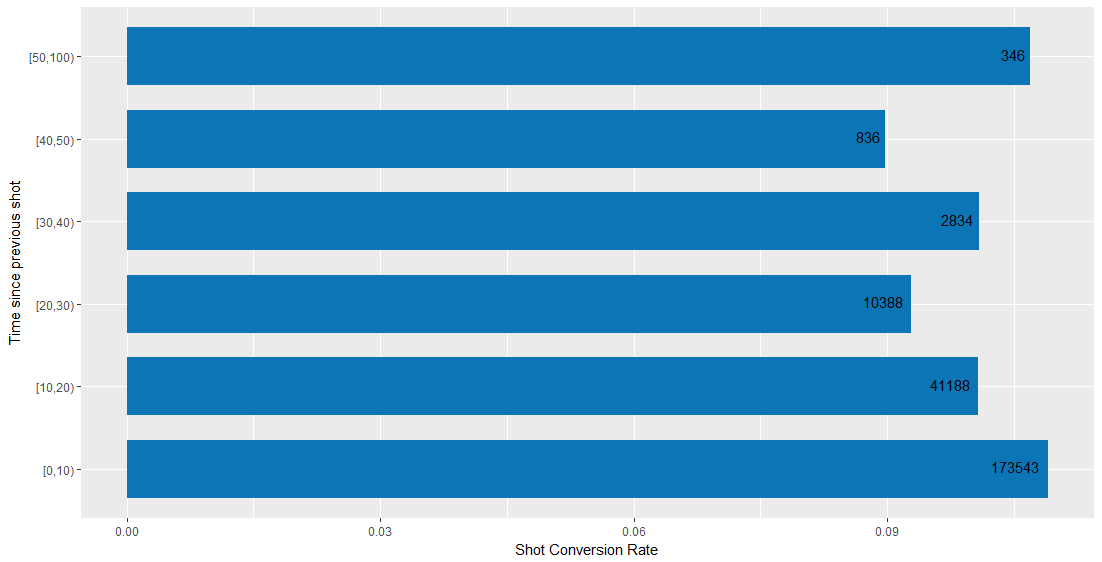Do idle keepers lose concentration?
A much used trope on the co-comms circuit is the congratulatory words for goalkeepers who make a save having stood idle for a certain period. Watching England’s pre-World Cup friendly with Costa Rica, Glen Hoddle could be heard trotting out this line after Jack Butland faced, and saved, his first shot.
Well done was gist of the comment for what was a routine save not worthy of plaudits, particularly for an England goalkeeper. The implication here is that in making such a save, Butland has had to overcome an extra impediment to simply making the save, brought on by the amount of time the ball spent at the opposite end of the pitch.
However, the question should be asked; is there any basis to this, and if not, why is this cliché an accepted form of analysis in mainstream coverage of football?
A look at the data from Europe’s top five leagues shows that the average wait time for a goalkeeper between shots is roughly 7 minutes. This increases to 17 minutes should only shots on target be considered. Shots were converted to goals approximately 10% of the time.
The bars below show the conversion rates for shots, binned by their times since the last shot. To the naked eye there’s no discernible pattern.
 A point-biserial correlation can be calculated for the data, and this too shows no significant relationship between the time of waiting and the likelihood of a save being made, working out at -0.019.
A point-biserial correlation can be calculated for the data, and this too shows no significant relationship between the time of waiting and the likelihood of a save being made, working out at -0.019.
It could be argued that perhaps the effect of standing idle is only felt in the very extremes of the data, that the effect is only felt by goalkeepers stood idle for 30+ minutes. The conversion rate of shots with a wait time of less than 30 minutes works out at 10.6%, with those coming after 30 or more idle minutes ending up in goals just 9.7% of the time. We can test this using Welch’s t-test, which will tell if there are any conclusions which can be drawn from our data.
The test gives a p-value of 0.96, indicating that there is no basis to conclude shots have a higher conversion rate having been preceeded by a long wait time. If we increase our cut off point to 40, and then 50 miniutes, our test gives us p-values of 0.78 and 0.58, both insignificant. It’s worth noting also that with each increase in threshold, our sample size is massively decreased - just 346 shots came after a 50 minute or more wait.
In some ways, it is understandable how one might think a goalie could be “cold” having stood simply watching for so long. While it’s a possbility that this effect is present in lower levels of the game, it’s clear that there is no evidence to suggest a keeper of the standard at a World Cup would lose concentration as time goes by.
